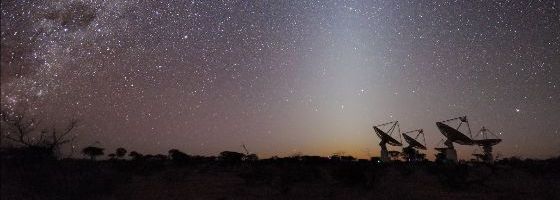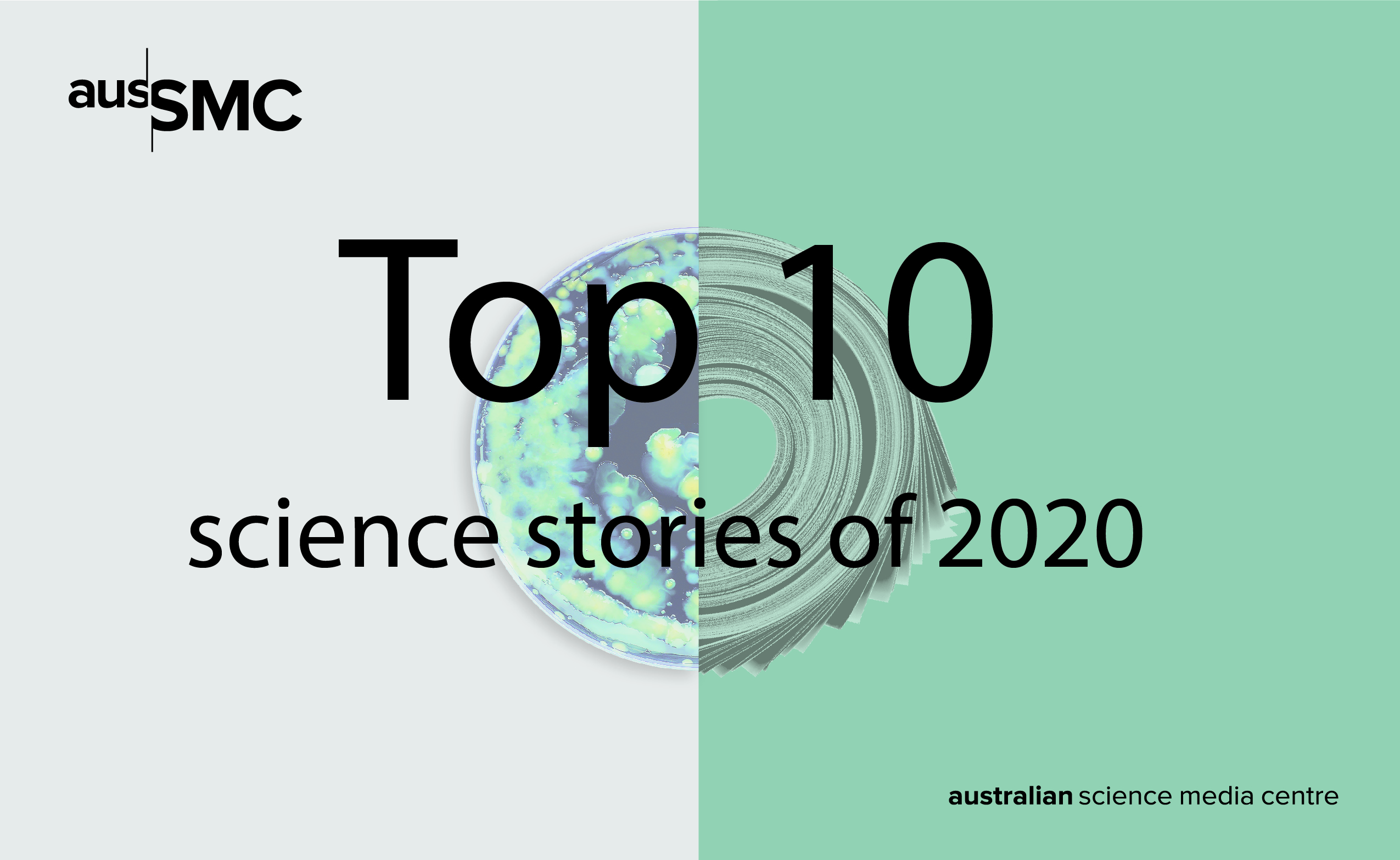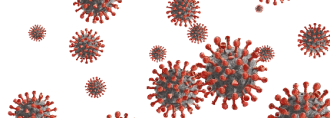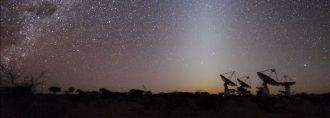Media release
From: Australian Science Media Centre
COVID-19 went viral
There’s no ignoring 2020’s elephant in the room – COVID-19. It all began in late 2019, when a cluster of cases of SARS-CoV-2 infection, initially thought to be cases of pneumonia, was reported in Wuhan, China. Before long, the virus spread rapidly around the world, reaching Australian shores in late January. In March, the first casualties were reported here, and the World Health Organization (WHO) declared a pandemic. Lockdowns, restrictions and bans on interstate travel followed, with devastating effects for the economy as businesses closed and jobs were lost. But Australia’s strict measures appear to have worked, with a total of 27,993 cases and 908 deaths as of Dec 10th. That means around one in a thousand Aussies has contracted COVID-19, compared with around one in 22 Americans and around one in 40 in the UK. Towards the end of the year, several COVID-19 vaccines offered some light at the end of the tunnel, an extraordinary feat given that vaccine development usually takes at least a decade. Vaccines are expected to be rolled out in Australia in March 2021.
The AusSMC’s COVID-19 resource page is here

CRISPR gene-editing made its way from the lab to the clinic
2020 was the year that the promising gene-editing technique CRISPR, which allows specific genes to be removed from cells, made its way from the lab to the clinic. In March, US scientists said they’d used the best-known CRISPR technology, CRISPR-Cas9, inside the body for the first time, to treat a patient with an inherited form of blindness called Leber congenital amaurosis. The doctors dripped fluid containing the gene-editing machinery under the patient's retina, in the hope the problematic gene that causes the condition could be snipped out of the patient’s own cells. The results of that trial have yet to be announced. Then, in December, US and German scientists published the successful results of a small trial using CRISPR-Cas9 to treat a pair of nasty inherited diseases that prevent blood from transporting oxygen around the body properly – beta thalassaemia and sickle cell disease. Two patients, one with each disease, received gene-edited stem cells from healthy donors. A year later, their blood and bone marrow contained high levels of the edited cells, and both patients no longer required regular blood transfusions.

The Black Summer bushfires devastated Australia
Exceptionally dry conditions caused by record-breaking temperatures and drought across southern and eastern Australia meant an early start to Australia’s 2019-2020 bushfire season, which turned out to be among the country’s worst. Throughout the summer, hundreds of fires burnt so fiercely that the smoke was visible from the International Space Station. The carnage was widespread and devastating, as the fires ripped through nearly 190,000 km2 across the country, destroying more than a fifth of the nation’s forests and more than 3,500 homes, and killing 34 Australians. Although the largest area burned in the NT, in terms of homes and lives lost, NSW bore the brunt. The financial costs of the fires are hard to estimate, but health costs alone were estimated at $1.95bn, and some experts have suggested the total may be more than $100bn. And the toll on our wildlife was heart-breaking too, with an estimated 3 billion animals affected, including 60,000 koalas killed or harmed. Scientists placed the blame for the severity of the fires squarely on climate change, urging the government to take stronger action on emissions. And fires weren’t just an Australian problem in 2020 – in Brazil, scientists reported 28 per cent more fires in the Amazon than in 2019, and wildfires in the USA tore through around 53,000 km2, destroying more than 14,500 homes.

We learned that Mars and the Moon are much wetter than we thought
In late 2020, there was some encouraging news for anyone hoping to take a trip the Moon or our planetary neighbour Mars – the discovery of plentiful water on both celestial bodies. In September, international scientists, including Australians, announced they’d found evidence of a patchwork of large salty lakes trapped under ice below the surface of the Red Planet. Water was first discovered on Mars a few years back, but the researchers analysed radar data from the European Space Agency and found that what was thought to be a single lake is in fact a whole network of water bodies. Then, in October, US scientists used data gathered by a telescope mounted on a Boeing 747 to confirm unambiguously the presence of water on the Moon. Previous subtle hints had been unable to prove that water was present, just that its components were up there. Another paper, released simultaneously, measured the area of the Moon permanently shrouded in shadow, areas the scientists said are likely to hold frozen water. They say these ‘cold traps’ could cover 40,000km2 of the lunar surface. Water on Mars and the Moon should make travelling there, or establishing longer-term bases, much easier, experts said, as at $35,000-per-litre it’s eye-wateringly expensive to bring it along when travelling through space.

The climate kept changing, ice melted, and biodiversity suffered
While the world focused on the pandemic, climate change and its knock-on effects continued apace, with monthly temperature records dropping like flies in a heatwave. 2020 is tipped to be among the warmest years on record, while the past decade will be the warmest on record, and the hottest six years have all occurred since 2015. Carbon dioxide concentrations in the atmosphere hit new highs too, passing 417 parts per million in May, a level not seen for millions of years. Those record temperatures meant ice around the world continued to melt rapidly. Scientists estimated we’ve lost 28 trillion tonnes from ice sheets, glaciers and mountains since 1994, and warned that it may already be too late to prevent Antarctica and Greenland melting, even if we stopped emitting greenhouse gases now. Satellite data suggested that melting ice from Antarctica and Greenland alone has already increased sea levels by more than 17mm, matching the worst-case sea-level rise scenario of the Intergovernmental Panel on Climate Change (IPCC). Our record on protecting Earth’s wildlife was also dismal. According to the UN, governments around the world failed to achieve any of 20 targets for biodiversity protection with deadlines in 2020. And scientists warned we are in the midst of Earth’s sixth mass extinction, a level of wildlife loss not seen since the dinosaurs died out.

Aussies achieved the fastest internet speed in history, on the NBN
Anyone who has heartily cursed Australia’s National Broadband Network (NBN) while working from home during 2020 may find this hard to believe, but Australian researchers achieved the highest recorded internet speed ever in May this year, using infrastructure that mirrors our much-maligned network. The scientists clocked up a whopping 44.2 Terabits per second, the equivalent of downloading 1,000 HD movies in less than a second - or one hell of a binge watch! They achieved the remarkable feat by replacing a typical setup of around 80 lasers with a single component called a ‘micro-comb’, technology they said could support high-speed internet connections for 1.8 million households in Melbourne at the same time, and billions across the world during peak periods. And all this could be achieved using the existing fibreoptic cables and optical chips of the NBN, they added. As well as allowing us to watch The Crown without all that pesky buffering, the technology could provide the bandwidth required for self-driving cars, and help the medicine, education, finance, and e-commerce industries, the scientists said.

Plastics were not so fantastic, from the ocean floor to the highest mountain
Our plastic problem continued throughout 2020, as scientists found microplastics – tiny plastic particles - everywhere they looked, from near the peak of Mount Everest to the sea floor. And we’re not just talking a few specks – Australian researchers warned there may be 14m tonnes of microplastics clogging up the seabed. Researchers found plastics have now been ingested by nearly all marine mammals, they cropped up in Antarctic food chains and in Antarctic sea ice for the first time, and an Argentinian aquarium reported that a green turtle defecated plastic waste for weeks after it was rescued. And, just as worryingly, Irish scientists reported that babies are consuming as many as 16 million microplastic particles in every litre of formula from plastic bottles, and a US study of 47 human tissue samples found microplastics in all of them. It’s a problem we are far from solving – Australian researchers found simply opening a plastic bag sprinkles microplastics into the environment.

A paralysed patient played Guitar Hero and two others controlled computers with their thoughts
In April, Ian Burkhart, an American with a paralysed right arm, had the sense of touch restored to his hand by hooking his brain up to a computer through a brain-computer interface (BCI). Thanks to the BCI, he could lift a coffee mug, swipe a credit card, and even play some sweet licks on Guitar Hero. The device detects tiny, imperceptible signals which are still sent from Ian’s hand to his brain, despite his injury. These signals are too faint for his brain to pick up, but the BCI amplifies them via a series of electrodes on his skin and a computer chip implanted in his brain, and provides feedback through a vibrating bracelet on his paralysed hand, a bit like the rumbling feedback on a video game controller. Then, in October, Australian researchers announced they’d successfully implanted a device into the brains of two paralysed patients with amyotrophic lateral sclerosis (ALS, commonly known as Lou Gehrig’s disease) allowing them to control a computer using just their brains and eyes. The device is a small, wireless BCI which, when combined with an eye tracker to move the cursor, allows for hands-free control of a computer. The patients were able to shop and bank online, as well as texting friends and family.

There was yet more grief for the reef
In March, The Great Barrier Reef Marine Park Authority confirmed that the reef had suffered widespread bleaching for the third time in five years. The full impact of bleaching in 2020 is not yet known, but is thought to be more widespread, although less severe, than the disastrous bleaching event of 2016, which killed around half the corals in affected areas. Bleaching occurs when the water is too warm for too long, forcing corals to eject their algae partners and causing them to turn white and starve. It is likely a result of climate change, and corals are also under threat from another product of our carbon emissions – ocean acidification. The final threat faced by the GBR is the crown of thorns starfish, which feeds on corals and can cause problems when their numbers get out of control. Although around half the GBR has disappeared since the mid-1990s, according to a study by reef scientists, new parts are still being discovered - a 500m tall new reef found just off Cape York was announced in October. In April, the Australian Government launched the research and development phase of its Reef Restoration and Adaptation Program, which includes 43 strategies such as brightening clouds with salt crystals, technologies to boost coral survival and recovery, and coral seeding strategies. But critics maintain the government is not doing enough to address the root cause of bleaching – climate change.

We solved the mystery of the Universe’s missing matter
2020 was the year Aussie and US scientists finally got to the bottom of a somewhat embarrassing problem that had troubled scientists for 30 years – what happened to all the missing matter in the Universe? We had never been able to account for around half of the stuff in the universe, although we suspected it must be hiding somewhere, based on studies of the early Universe. In May, the researchers announced they’d got to the bottom of the mystery by studying strange radio waves from space - known as fast radio bursts (FRBs). FRBs are brief flashes of intense energy that travel through space, and which are spread out by matter, a bit like light is spread out by a prism. CSIRO’s Australian Square Kilometre Array Pathfinder (ASKAP) telescope’s pinpoint accuracy allowed the scientists to measure exactly how far six FRBs were from Earth. Combining that information with data from other telescopes around the world meant the researchers could measure the density of the missing matter, and ‘weigh’ the Universe accurately. When the sums were done, it all added up, and the missing matter was missing no more. But exactly where that matter is remains a mystery to be solved, the scientists said.












